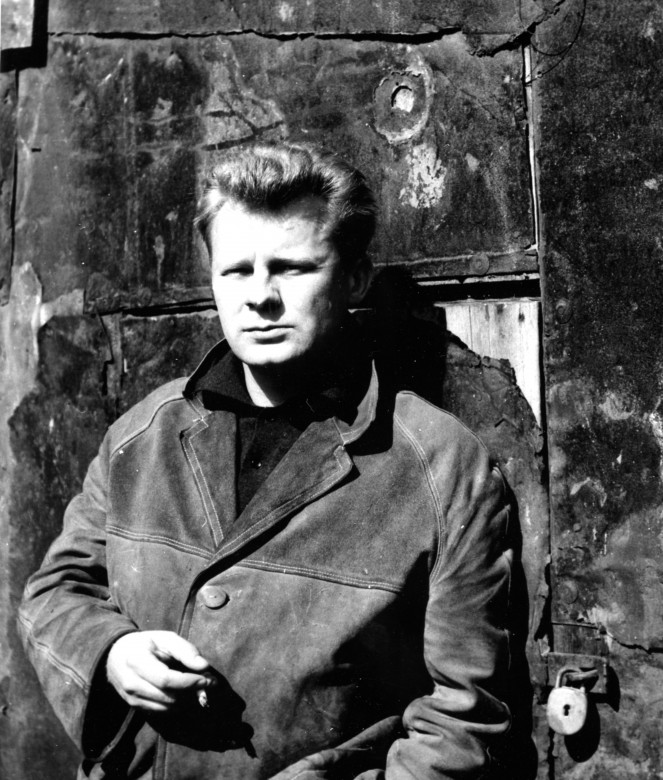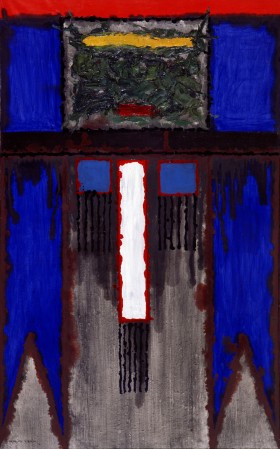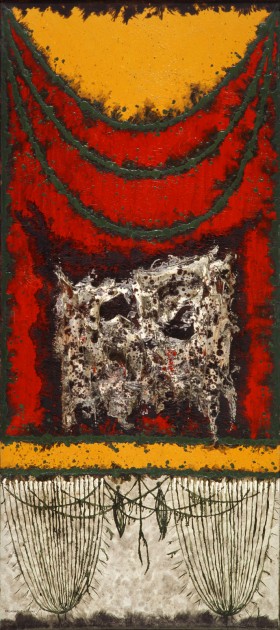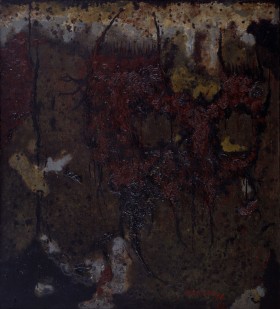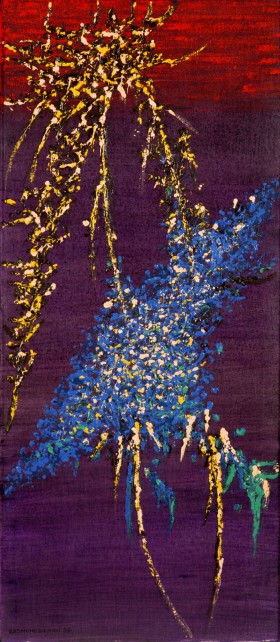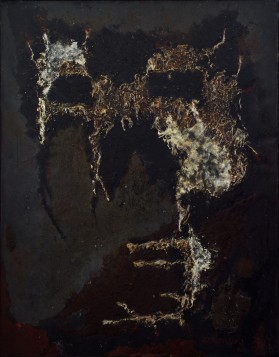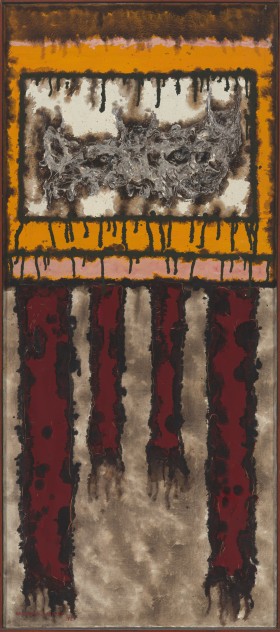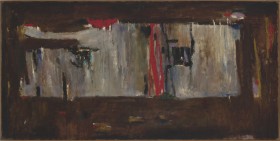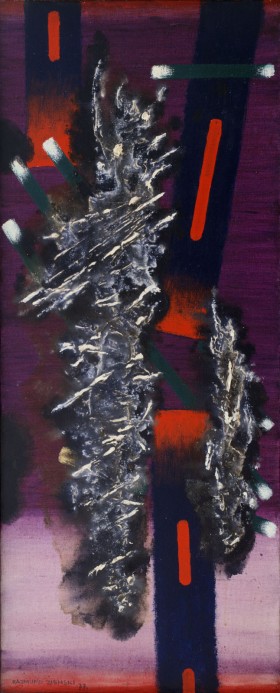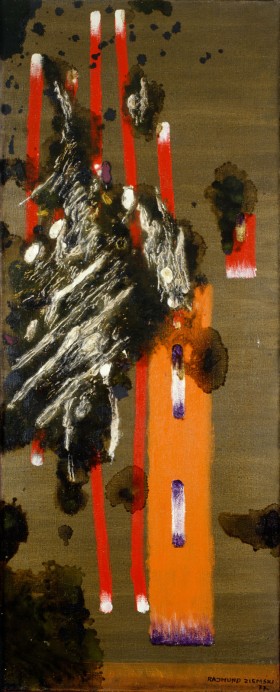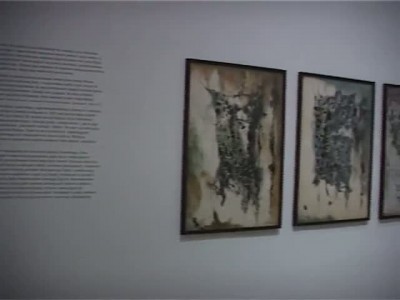Rajmund Ziemski Landscape 1953–2005
13.07 – 26.09.2010 Rajmund Ziemski Landscape 1953–2005
Zachęta National Gallery of Art
curator: Joanna Kania
cooperation on the part of Zachęta: Julia Leopold
exhibition design: Grzegorz Rytel
For several decades, virtually every day of his life, Rajmund Ziemski (1930–2005) struggled with the desire to express his emotions and vision of the world in a purely painterly manner. The vast majority of his paintings are entitled Landscape, which implies a reference to reality while they balance on the border of abstraction and representation. The paintings gathered at the exhibition show the transformation of language that he spoke, the stages of his painting quest.
[...] At the end of the day, looking at a landscape one might feel very different things. One might relish its colour or the harmony of forms, but one might also be thinking that it is a creation of our senses, wondering about the passing of our human affairs. For me, the landscape is not a pretext. I draw juices from the landscape, because it is precisely nature that arouses all those anxieties that you have just called my obsession.
Faces in Zwierciadło. Rajmund Ziemski in conversation with Danuta Łomaczewska, Zwierciadło, 1962 no. 22.
The painting that opens the exhibition probably dates from the plein-air meeting at Suchacz near Elbląg, where Ziemski went in 1953 while still a student of the Academy of Fine Arts in Warsaw. Already in the 50s, the artist began to lean towards the fairy-tale stylization of natural motifs, using a thick, dark contour and, as Alexander Wojciechowski put it, “lavishing” them with gold. The Birds series represents the same, quasi-surreal period. Signs is a series of dark, disturbing shapes, resembling canvases hanging on a rope. Soon, they become stretched nets, constructed with textural convex “ropes” of paint.
The 60s is one of the best periods in Ziemski’s career, and doubtless the period of his greatest popularity, when he became one of the best known representatives of Matter Painting. That is when he created the poignant series of oil paintings, in which painfully jagged, lustreless drapes, shining at times with a band of intense colour, turn into dark hollow eye sockets of a skull or into some creatures, which are built with thick layers of lumpy paint. At the same time he made lyrical gouaches of exquisite colour, often as variant versions of later oil paintings. Towards the end of that period there appeared paintings that alluded to the form of banners carried in church processions. A kind of role reversal takes place and the painting watches the viewer, insistently and critically.
In the latter half of the 60s, Rajmund Ziemski entered a “journalistic” period, as he himself described it in an interview. Triptychs – whose side panels are oil paintings, with the central part consisting of a photograph, covered with metal mesh, on which there is a composition of papier-mâché – are a new way of expressing contemporary anxieties. Formally, it was an attempt to make painting spatial, to include it in the current experiments, which were initiated at the Biennale of Spatial Forms in Elbląg, 1965. But Ziemski soon abandoned those attempts, focusing solely on the craft of painting. Works from this period are on display at Zachęta for the first time since the late 60s.
Ziemski painted Triptychs, carrying with them associations with sacred art, and likewise, the “banners" series of paintings, in the early 70s. Criticism then drew attention to the much lighter palette and to the “brightening up” of the hitherto gloomy artist. What is invoked, apart from Matter Painting, is the context of Polish Colourism, of which Rajmund Ziemski, a favourite disciple of Stefan Nacht-Samborski and Jan Cybis’s assistant at the Warsaw Academy of Fine Arts of many years, was a natural heir. Planes of vibrant, saturated colour, contrasted with textural fragments, are a result of the use of the properties of acrylic paints, which he then began to use, initially mixing them frequently with oils, even gouache. For a short period, he created quasi-geometric paintings, composed of “tin” shapes outlined with strong, dark contours, then, in the latter half of the 70s, he returned to contrasting on canvas the lumpy “living” matter and ordered forms. In 1979, Rajmund Ziemski received the Jan Cybis Prize. Critics began to describe him as a “modern classic”. His canvases from the 80s approach the imagery of nature again, and Landscape, the title accompanying Ziemski’s painting for over 20 years, become obvious in the case of many paintings of that period. It also becomes clear that he drew inspiration from Chinese art and calligraphy – in the compositions based on a juxtaposition of plant shapes, built with nervous thick strokes, and luminous space, full of air.
In the 90s, the contrasts in his paintings become sharper, colours intensify, colour harmonies giving way to dissonances, often provocative. Metallic sheen, so frequent in the early paintings, comes back. Pictures do not now resemble Chinese woodcuts, becoming rather like many times enlarged characters of Japanese calligraphy, painted with fury on precisely delimited areas of intense colour. At the beginning of 2000, composition becomes further simplified, and one can often see the weakness of the hand, putting “signs” on the prepared construction of the planes. Each canvas is, however, an attempt to find a solution to the problem in painting the artist posed himself. The exhibition closes with his last painting, Landscape 6/2005.
Rajmund Ziemski
Landscape 1953–2005
13.07 – 26.09.2010
Zachęta National Gallery of Art
pl. Małachowskiego 3, 00-916 Warsaw
See on the map
Exhibition organized in cooperation with the Academy of Fine Arts in Warsaw
sponsors of the gallery: Netia, Caparol, Lidex
sponsors of the opening ceremony: A.Blikle, Freixenet
media patronage: Gazeta Wyborcza, TOK FM, The Warsaw Voice, Stolica, Art&Business, Artinfo.pl
